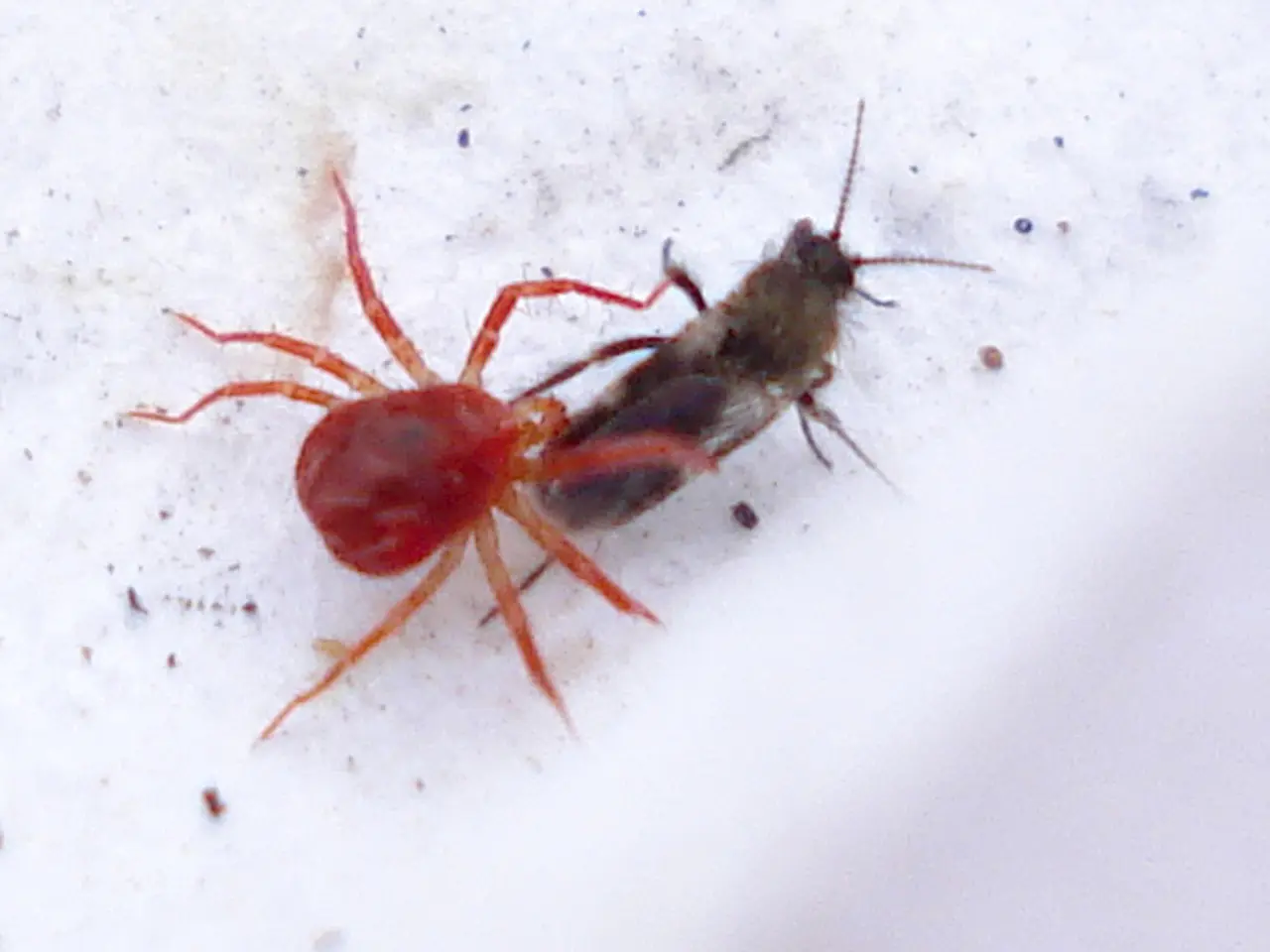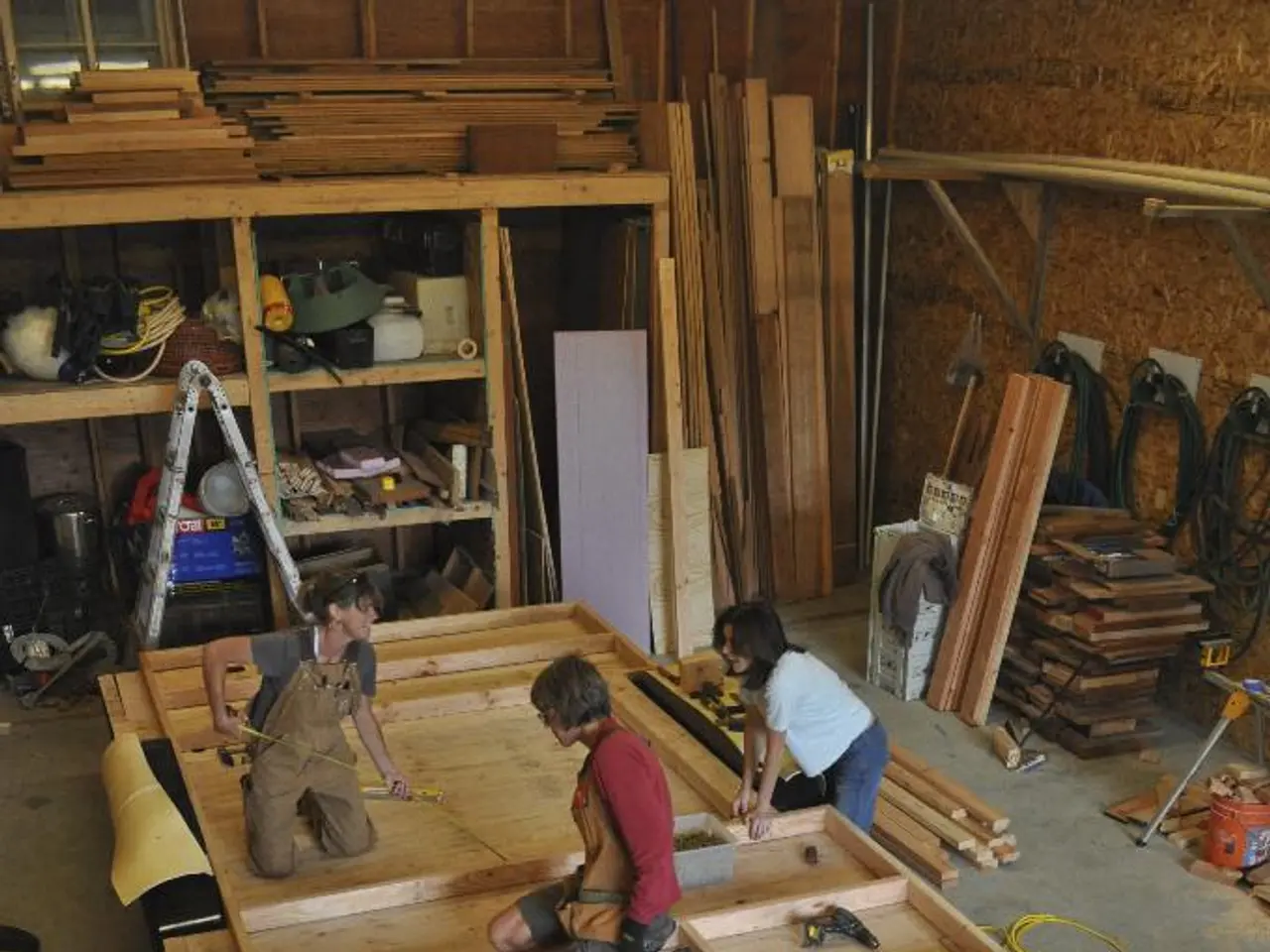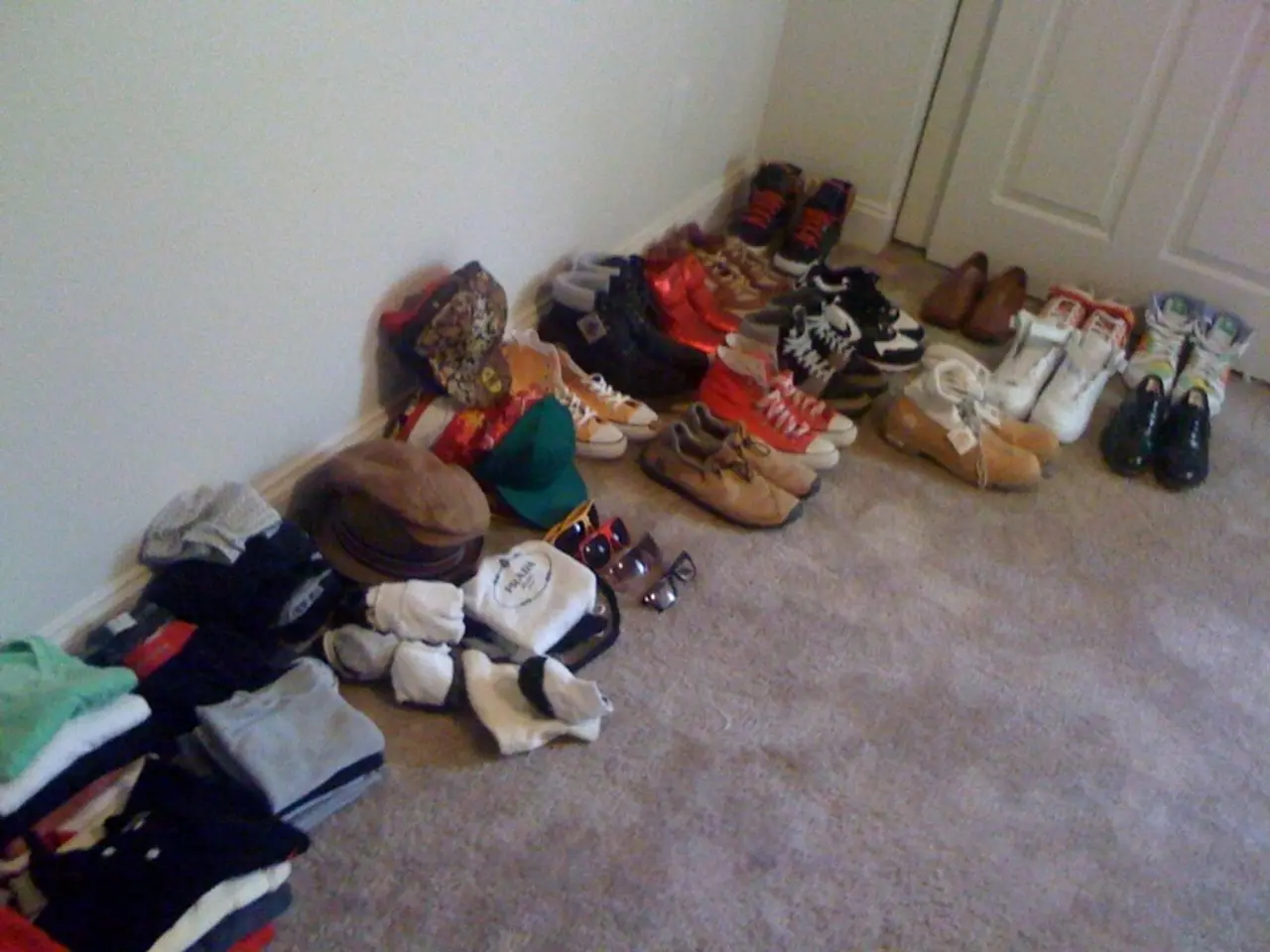Destructive Insects: Ruining Homes and Fabrics with Their Appearance
In households across the UK, a common pest known as carpet beetles poses a significant threat to fabrics and textiles. These tiny insects go through a complete metamorphosis lifecycle, consisting of four stages: egg, larva, pupa, and adult.
The larval stage, which can last up to nine months indoors, is the most destructive and longest-lasting. During this stage, the larvae molt multiple times and feed on natural fibres in carpets, clothing, furniture, and other materials made from animal products.
### The Lifecycle of Carpet Beetles
The egg stage begins with tiny, round, translucent eggs, about 0.5 to 1 mm in size, which are laid in dark, undisturbed areas such as carpeting and closets. The larvae that hatch from these eggs are about 4 mm long, tear-drop shaped, covered with brown or dark bristly hairs, with longer hairs at the tail end.
Once hatched, the larvae pupate in hidden places before emerging as adults. Adult carpet beetles are small, 2-3 mm, often speckled or patterned with yellow, white, black, or brown. Unlike larvae, adults do not damage fabrics but lay eggs inside to start the cycle again.
### Identifying Carpet Beetles
Larvae are tear-drop shaped with dense, stiff bristles/hairs, dark coloured to tan, about 4 mm long. They are often found in carpets, upholstery, closets, or dark corners. Adults are small oval beetles, 2-3 mm, speckled in black, white, yellow, or brown.
Damage signs include holes and thinning in wool carpets, clothing, upholstery; shed larval skins; and the presence of larvae and adult beetles near natural fiber items.
### Controlling Carpet Beetles
An early and thorough approach is critical, as carpet beetles reproduce quickly and larvae cause progressive damage to fabrics if left untreated. Regularly check carpets, rugs, closets, baseboards, air vents, and upholstery for larvae, shed skins, and adult beetles. Frequent vacuuming, especially in dark or undisturbed spots, can remove eggs and larvae. Steam cleaning carpets can be helpful.
Good housekeeping is critical in preventing carpet beetle infestations. Remove accumulated lint, pet hair, and any animal furs or remains that larvae feed on. Close windows and install screens to prevent adults from flying indoors. Professional pest control using appropriate insecticides may be necessary for heavy infestations, especially since vacuuming alone may not eliminate larvae that burrow into fibres.
Some natural approaches can help reduce populations safely around children and pets but may not fully control heavy infestations.
In conclusion, understanding the lifecycle, identification, and control measures of carpet beetles is essential for maintaining a pest-free home. Regular cleaning, good housekeeping, and prompt action against infestations can help keep these destructive pests at bay.
In the world of science, understanding the medical-conditions of carpet beetles is crucial for maintaining a pest-free lifestyle at home. The larvae of these insects, when left unchecked, can damage home-and-garden items such as carpets, clothing, and furniture made from animal products, potentially causing significant lifestyle inconveniences.




